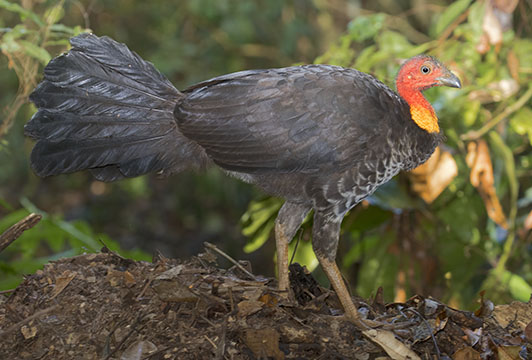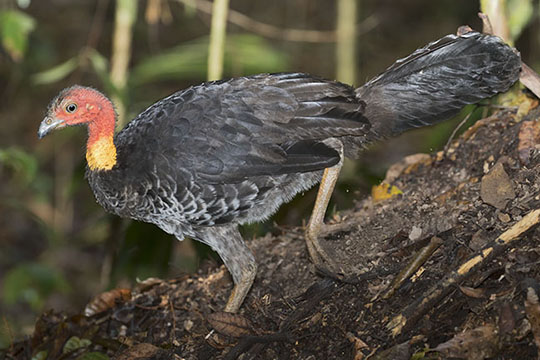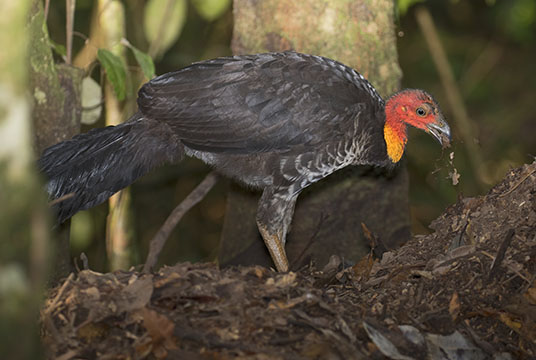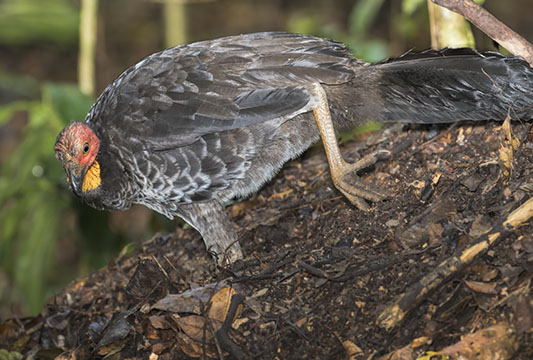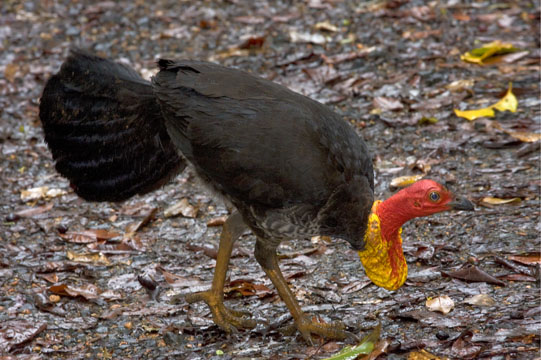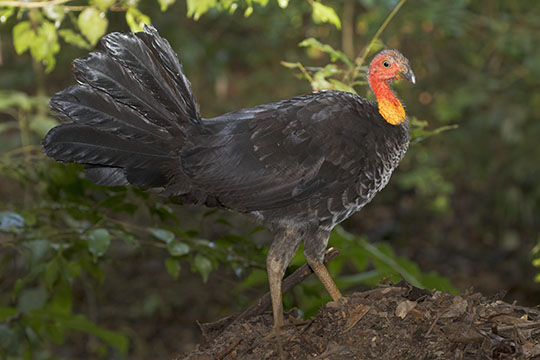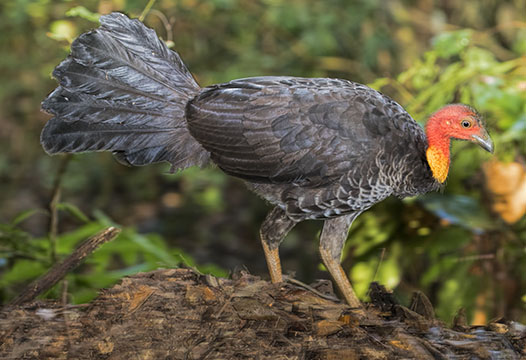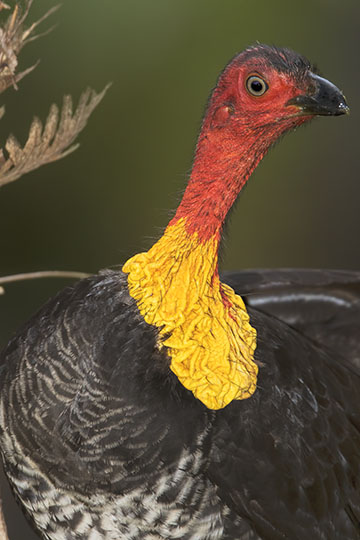 |
 |
|
|
|
|
The big, rather ungainly looking Australian brush-turkey, like the orange-footed scrubfowl, is a megapode. 'Megapode' means big foot, and the males use their large feet to scrape up huge mounds of dirt, humus, and fallen leaves, in which the eggs are laid. The decaying vegetation produces heat that warms the eggs and serves as an incubator; the attending male periodically checks the temperature, adding or deleting compost as needed (that's what one of these birds is doing). The chicks are the most precocial of all birds: they can fly almost as soon as their plumage dries, and no parental care is provided. Chicks dig themselves out of the mound and are on their own from then on. Adult males have bigger wattles than females or young males. Brush-turkeys are common in northeastern rainforests, and are moving south; apparently they are making pests of themselves in gardens in the Sydney suburbs. These were photographed in Kingfisher Park in Julatten, far north Queensland; they were pretty tame but I found them difficult to photograph because the light was always dim on the forest floor and the birds seemed to never stop moving. |
|
|
|
